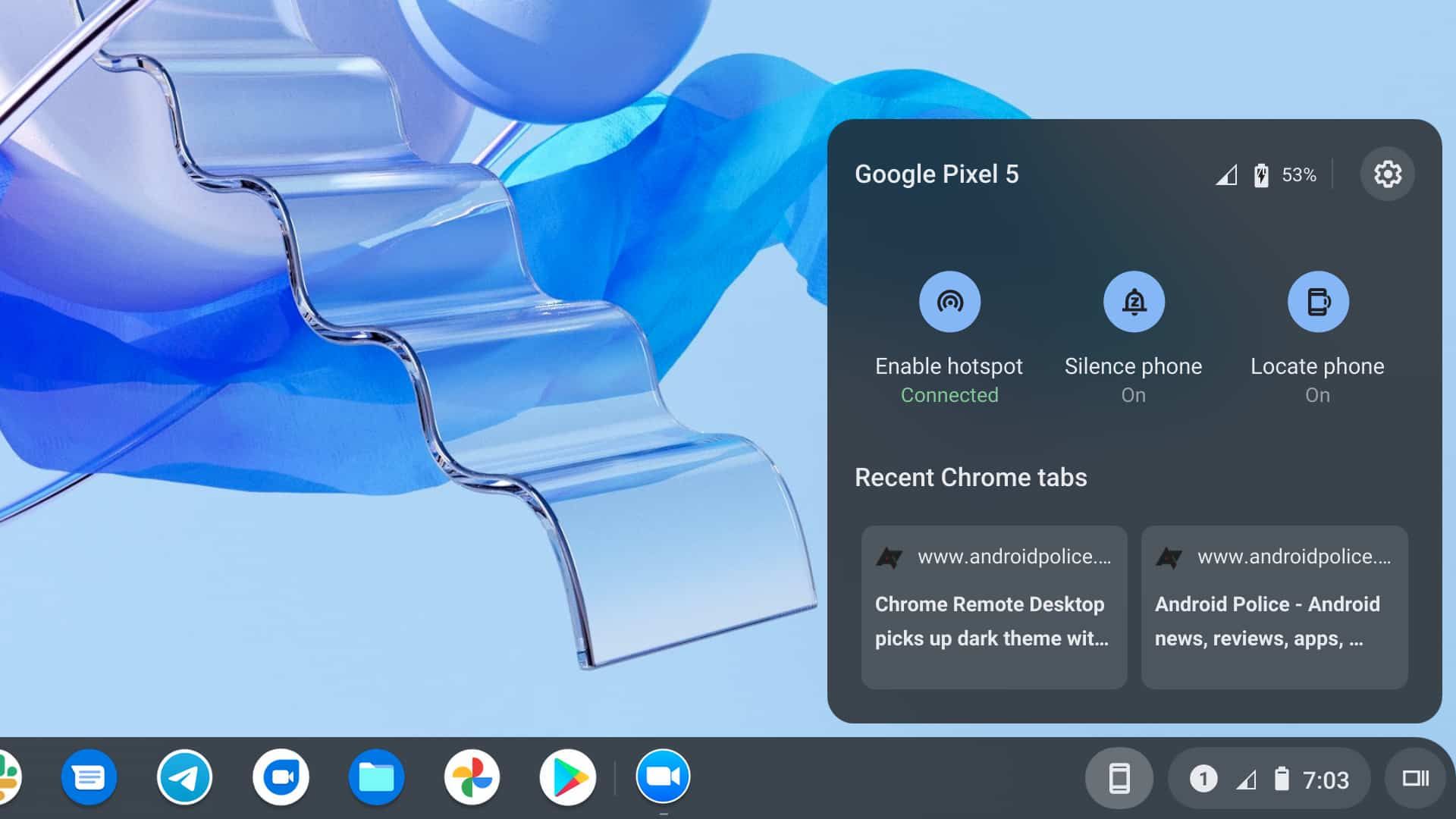Apple showed off a bunch of characteristically flashy new hardware and software including a new desktop chipset, new MacBooks, and a new version of iOS at WWDC earlier this month. One new feature in particular caught my eye: soon, Mac users will be able to use iPhones as wireless webcams almost no fiddling required. It’s exactly the kind of thing I’d expect from Apple because the company loves hardware integration. It’s also something I think Google should adapt for Chrome OS.
Apple’s Continuity Camera will soon let any Mac computer running MacOS Ventury use an iPhone running iOS 16 as a webcam. As demonstrated, it seems very slick: connect your iPhone to a specialized MagSafe mount, clip that mount to your display, and the phone will show up as a connected camera in your Mac’s software. The vast majority of dedicated webcams just aren’t very good, so using a modern smartphone camera instead means your video calls will look much better.
The new Continuity Camera feature definitely isn’t an entirely new idea—here are apps for both Mac and Windows that accomplish roughly the same thing, and many of them work quite well. But they also require research, setup, USB cables, and ocassionally money. An OS-level feature that cuts out the majority of the legwork is worlds different from hacky third-party solutions—people might actually use it.
Phone Hub running on Chrome OS.
Cross-device functionality like this is big in Apple’s ecosystem, but Google’s been making strides toward similar integrations for its own platforms. Chrome OS’s Phone Hub links your Chromebook to your Android phone, making it easy to share notifications, texts, and even mobile data between the two devices. Compared to Apple’s suite of Continuity features, Phone Hub is limited, but a Continuity Camera-like feature seems like a natural extension of the functionality.
Most existing Chrome OS devices already have cameras built in, but being webcams, they’re not very good—particularly the ones in lower-end models. Chromebooks as a whole would stand to benefit more from a feature like this than MacBooks do; Apple’s webcams aren’t great, but they’re better than the built-ins you’ll find in budget laptops. Remote work isn’t going away, either, and effortless, high-quality video calls could be a very compelling selling point for Google’s platforms.
Controlling both hardware and software, Apple has a clear advantage over Google here—any Chrome OS feature needs to work across hundreds of different device types, whereas Apple only has to optimize for a few models. In Apple’s Continuity solution, your iPhone populates in your Mac’s list of available webcams, and the system can even switch to your phone’s camera automatically when the two devices connect (though developers will need to build support for that last bit into their apps). Given Phone Hub’s state, a Chrome OS equivalent surely wouldn’t work as seamlessly, but a simpler solution that essentially dials into a single video meeting with two separate devices would go a long way toward replicating the experience — with video input from your phone’s camera and video output on your monitor.
At WWDC this year, Apple announced all kinds of features for its products that Google offered in its own first. It’s just how big tech works: companies iterate on their competitors’ ideas practically as much as their own. I’d love to see Google’s take on the phone-as-webcam concept—it’s too good an idea to stay in one ecosystem.





